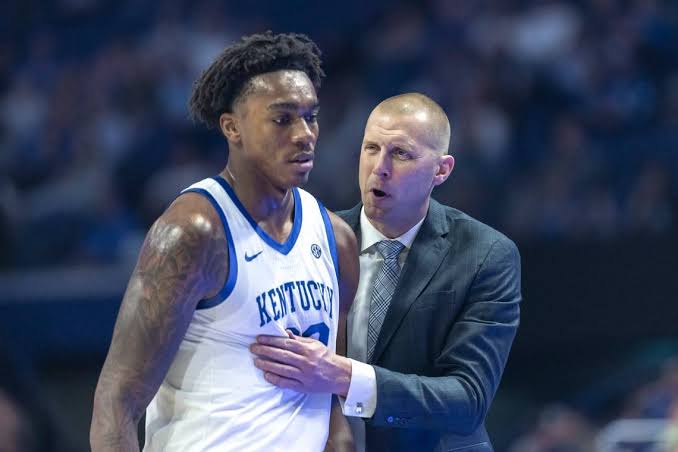Mark Pope’s arrival at Kentucky has been marked by high expectations, especially when it comes to the offense. Known for his fast-paced, up-tempo style during his time at Utah Valley, Pope promised a more aggressive offensive approach for the Wildcats, aiming to inject speed and excitement into their play. However, as the season unfolds, the results have been somewhat mixed, with the numbers suggesting that while there has been progress, Kentucky is still adjusting to Pope’s high-energy system.
From the outset, Pope emphasized the need to push the tempo, move the ball quickly, and generate more fast-break opportunities. He inherited a Kentucky team that, while talented, had often relied on a more methodical approach in recent years, underperforming at times in the face of a more deliberate offensive style. Pope’s promise of fast-paced basketball was a direct response to these issues, hoping to foster an offense that would keep defenses on their heels and capitalize on the Wildcats’ athleticism.
Early on in the season, the results have been a blend of flashes of potential mixed with inconsistencies. On paper, Kentucky’s offensive efficiency has improved, but not by the explosive margin many fans and analysts anticipated. According to advanced metrics, the Wildcats have increased their pace of play, ranking higher in possessions per game compared to the previous season. Their transition game has seen noticeable improvements, especially in games where they have controlled tempo. Yet, in certain matchups, particularly against high-caliber defensive teams, Kentucky’s fast-paced offense has sometimes sputtered, and the team has struggled with turnovers and poor shot selection.
One area where Pope’s vision has been effective is in the increased reliance on perimeter shooting. Under Pope’s system, the Wildcats have increased their three-point attempts, leveraging the shooting abilities of several players to stretch the floor. While this has made them more dynamic, their shooting percentages have been a mixed bag—showing improvement in some games but often inconsistent when facing top-tier competition.
Another key statistic has been Kentucky’s offensive rebound rate. Pope’s fast style puts more emphasis on getting up quick shots, and as a result, the team has often been able to secure second-chance opportunities. However, at times, their quick-shot approach can lead to rushed possessions and missed opportunities, which has undermined their effectiveness. A lack of efficiency on offense has also meant that their fast-break opportunities haven’t always been as productive as expected, and when the pace slows down, the Wildcats sometimes struggle to execute in half-court settings.
Defensively, the shift in offensive philosophy has had a ripple effect on how Kentucky approaches the other side of the ball. While Pope has continued to encourage aggressive defense, the fast pace of the offense has sometimes led to lapses on defense, particularly in transition. The increased tempo has occasionally left the Wildcats vulnerable to quick counterattacks from opponents, which has resulted in a few tough losses where defensive breakdowns became critical.
In sum, while the numbers show some signs of progress under Mark Pope’s fast-paced offensive system, it’s clear that the team is still in transition. The Wildcats have demonstrated the potential to excel in Pope’s high-speed system, but they also face challenges in terms of consistency, decision-making, and defensive stability. Whether the Wildcats can fully capitalize on Pope’s vision and become a true fast-paced powerhouse will depend on how quickly they can iron out these issues and maintain their tempo throughout the season. As the season progresses, it will be intriguing to see how Kentucky fine-tunes its approach and whether it can fully embrace the high-flying offense Pope promised.
